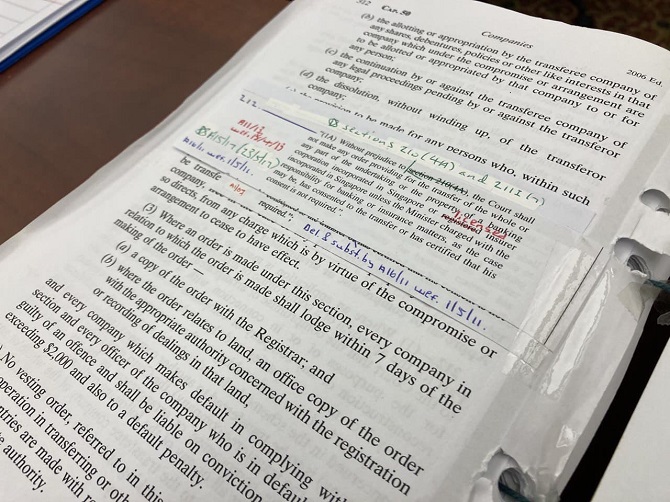
THE SLIPS OF PAPER THAT KEPT A PROFESSION ON TRACK
Analogue methods of legal research hold a certain nostalgia for Ms Umayal Balakrishnan, who has worked as a librarian at Drew & Napier since 1994.

Before the advent of online resources like LawNet, the only way to update changes on statutes and legislation was to do it manually on the print copies. Ms Umayal, who started her first job at Palakrishnan and Partners in the early 1980s, learnt everything on the job as the firm’s first librarian. At the firm, she faced the gruelling task of putting everything in order, since its library had been disorganised up to that point. “So when I joined I had to go over to the Supreme Court to learn from the librarians there.”
Those librarians, some of whom would become close friends, taught Ms Umayal how to update the various research materials found in the law library. “There was no online resource to turn to for answers back then. As librarians (meaning, law librarians as a specialist class), we had to learn where to get the amendments, find which sections had to be amended and note when the enforcements came into effect,” explains Ms Umayal.
The amendments were painstakingly handwritten, cut and pasted over previous provisions. The process was tedious, time-consuming and tiring for the young lady with no legal experience. “I had no knowledge of the law and how it worked. I was really lost.”
But she persevered and eventually found her footing, winning the praise of her boss, Mr Palakrishnan. Word of her meticulous nature got around and she was approached by the Law Society to manage its library as well. “On Saturdays, I would go do that and help them keep track of amendments too.”
Times have changed dramatically since then and legal research is now synonymous with resources like LawNet, which launched in 1990, a few years before Ms Umayal joined Drew & Napier. In her early years at the firm, she had to learn the ins and outs of LawNet since computers were not widespread and often only found in the firm’s library. “I would actually log in for the older lawyers while the junior lawyers would do the search themselves,” she quips. But the content of the early LawNet was a far cry what it is today. “Things got a lot better over the years. Today, LawNet even has unreported cases and commercial precedents.”
While she is grateful that the physical task of amending statutes and subsidiary legislation has lessened over the years, she still feels nostalgic about them.
The analogue methods of legal research may seem like a page from history but it was how the profession practised at a time when everything was paper-based. Ms Umayal recalled that the senior lawyers from “that time were like walking encyclopedias… You could bring up a legal point, section or a case and they would tell you all about the cases. These were the old-timers, like Mr Palakrishnan, Mr M P Kanisan and Mr Davinder Singh.” For her, flipping through these amendments from time to time is one way of keeping alive a vignette from yesteryear.
“Never be stagnant” may be a fitting description of Singapore’s legal system, which remains keenly attuned to society’s shifting needs surrounding justice. Since its inception 30 years ago, LawNet has been a committed partner to this process. By evolving and refining its services, it has been key to the digitisation of Singapore’s legal system, while also cementing the Republic as a global legal research hub. In this series, the Singapore Academy of Law, which runs and manages LawNet, will tell the stories of the people behind, in the centre of and for whom LawNet was envisioned. We’ll also share our plans for the portal as our legal system approaches another chapter in its liveried history. Join us as we tell these tales of yesterday and visions for tomorrow; and tell us yours as well by using #LawNet30 on social media.






